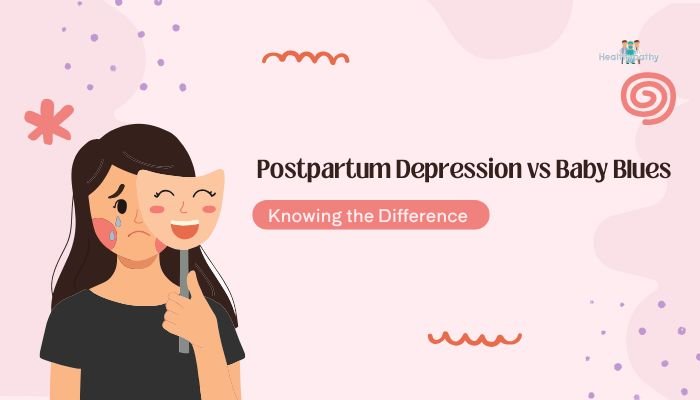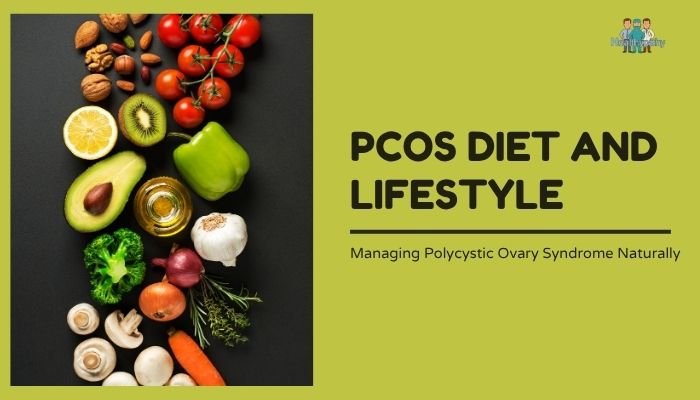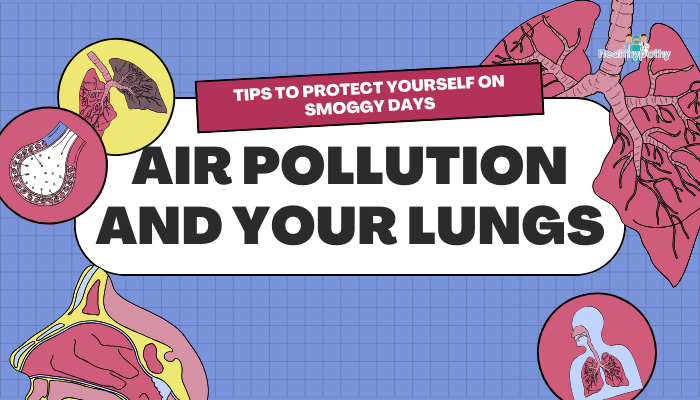Introduction
Childbirth represents both a joyous event and a profound life transition. As a new baby enters the family, the mother experiences a sudden shift in hormones, sleep patterns, and daily life. This transition can spark various emotional responses, ranging from happiness to sadness, anxiety, or self-doubt. Two terms often arise when discussing maternal mental health in the early weeks: “baby blues” and “postpartum depression.” Although these conditions share overlapping symptoms, they differ significantly in intensity, duration, and the level of intervention needed.
The “baby blues” typically involve short-lived mood swings, occasional sadness, and worries that emerge soon after childbirth. In contrast, postpartum depression (PPD) represents a more serious, long-lasting condition that can impair a mother’s ability to cope and bond with her child. Distinguishing baby blues from postpartum depression ensures that women receive the right degree of understanding, support, and clinical attention.
This article clarifies the key features of baby blues and postpartum depression, exploring risk factors, warning signs, coping strategies, and available professional help. Whether you are a new mother, a supportive partner, a friend, or a family member, understanding these conditions can encourage timely interventions and foster a healthier postpartum experience.
Understanding the Postpartum Period
The postpartum phase, often known as the “fourth trimester,” spans approximately 12 weeks following childbirth. During this period, a mother’s body recovers from pregnancy and delivery, while adjusting to hormonal changes. She also adapts to her newborn’s feeding and sleeping needs. Even for those with prior parenting experience, each postpartum journey is unique.
Hormonal Shifts and Emotional Effects
- Decline in Pregnancy Hormones: Estrogen and progesterone levels drop sharply after delivery. This fluctuation can influence neurotransmitters in the brain linked to mood regulation.
- Increased Stress Hormones: Caring for a newborn includes unpredictable sleep and feeding schedules. Fatigue, tension, and stress can become more acute if the mother lacks consistent rest or support.
- Oxytocin Release: Oxytocin peaks during breastfeeding and helps form an emotional connection. Nevertheless, oxytocin does not neutralize all postpartum emotional challenges; many mothers still need additional help to navigate this phase.
Emotional Vulnerability
- Expectations vs. Reality: The reality of newborn care can clash with idealized visions of motherhood, leading to disappointment or guilt.
- Need for Adaptation: Caring for an infant often consumes nearly all of the mother’s time and energy, potentially reducing her ability to focus on self-care or engage in previous activities.
- Family Dynamics: Partners, other children, and extended family also must adjust, possibly contributing to stress or misunderstanding if roles change suddenly.
Understanding this backdrop of rapid physical, psychological, and social change helps clarify why many women experience emotional ebbs and flows soon after childbirth.
Defining Baby Blues
Baby blues, sometimes called the “postpartum blues,” typically emerge within the first few days after giving birth. An estimated 50–80% of new mothers experience some degree of these transient emotional ups and downs.
Key Characteristics of Baby Blues
- Onset: Often begins two to three days postpartum. Symptoms can peak around the first week.
- Mood Swings: Mothers might feel joyful at one moment and tearful or irritable the next. Changes may occur quickly.
- Mild Sadness and Anxiety: A sense of worry or unease may surface, yet it typically does not impede the mother’s ability to function.
- Fatigue and Sleep Disruption: Frequent night feedings and general newborn care reduce rest, exacerbating emotional ups and downs.
- Short Duration: Baby blues usually resolve without medical intervention within two weeks as hormones stabilize and the mother adjusts to her routine.
Possible Causes of Baby Blues
- Hormone Fluctuations: Sharp drops in estrogen and progesterone affect brain chemistry.
- Sleep Deprivation: Caring for a newborn often involves waking every couple of hours, spurring exhaustion.
- Emotional Overwhelm: Motherhood requires juggling new responsibilities and establishing feeding routines, which can feel stressful, even for experienced parents.
- Physical Recovery: Some mothers cope with perineal stitches, cesarean incisions, or breastfeeding challenges, contributing to a sense of vulnerability.
Most women experiencing baby blues notice improvement as they establish a consistent feeding pattern, gather more confidence in infant care, and receive support from family members or friends. Simple measures such as adequate rest, healthy meals, and open discussions about how they feel can ease these symptoms.
When Baby Blues Might Signal Something More
Although baby blues are considered mild and self-limiting, it’s important to pay attention to their duration and intensity. If the following concerns arise, further assessment may be warranted:
- Persisting Longer Than Two Weeks: Baby blues typically peak around the first or second week postpartum and then decline. Ongoing severe mood swings may suggest a deeper issue.
- Escalating Sadness or Hopelessness: If sadness intensifies or daily functioning deteriorates, postpartum depression becomes more likely.
- Extreme Anxiety or Panic: Out-of-control worry, insomnia, or inability to relax can point toward clinical anxiety.
- Self-Harm or Thoughts of Harming the Baby: Such thoughts require immediate professional intervention.
- Difficulty Bonding with the Baby: While feeling overwhelmed is normal, persistent disconnection from the infant should prompt evaluation.
Recognizing these red flags allows caregivers, partners, or family members to initiate conversations about postpartum depression and direct the mother toward more structured help.
Understanding Postpartum Depression
Postpartum depression (PPD) is a clinical mood disorder that can emerge within the first few weeks after childbirth, although it may appear later in some cases. While it shares certain symptoms with baby blues, postpartum depression is more severe, lasts longer, and significantly interferes with a mother’s ability to care for herself or her infant.
Core Symptoms of Postpartum Depression
- Persistent Low Mood: Intense sadness or emotional numbness that persists most of the day, nearly every day.
- Loss of Interest: Hobbies or activities previously enjoyed may lose appeal, signaling anhedonia.
- Fatigue and Lethargy: Extreme tiredness beyond typical newborn-related lack of sleep, hindering daily tasks.
- Feelings of Guilt or Worthlessness: Mothers may feel inadequate or believe they’re failing in their parenting role.
- Crying Spells: Frequent, uncontrollable crying that may not have a clear trigger.
- Appetite or Sleep Disturbances: Changes in eating patterns (lack of appetite or overeating) and trouble sleeping, even when given the chance to rest.
- Difficulty Bonding: Persistent doubt or fear in caring for the baby, or a sense of emotional detachment.
- Possible Suicidal Thoughts: In severe cases, mothers may contemplate self-harm or believe their families would be better off without them.
PPD symptoms can surface at any point within the first year postpartum but typically appear in the initial three months. The condition will not simply vanish over time without some form of intervention, whether that involves counseling, medication, or other treatments.
Risk Factors for Postpartum Depression
Although postpartum depression can affect any mother, certain aspects of one’s health, personal background, or family circumstances can elevate the risk. Recognizing these factors allows for proactive screening and early support.
Biological and Personal Factors
- Previous Depression or Anxiety: A history of mood disorders increases susceptibility to postpartum depression.
- Hormonal Vulnerabilities: Some individuals may be more sensitive to shifts in estrogen and progesterone levels.
- Family History: Having close relatives with psychiatric conditions can predispose a woman to depression.
- Difficult Pregnancy or Delivery: Complications such as preterm labor, severe morning sickness, or traumatic birth experiences can contribute to distress.
Environmental and Social Contributors
- Lack of Support: Limited help from partners, family, or close friends can intensify feelings of isolation.
- Financial or Relationship Strains: Caring for a new baby may worsen pre-existing difficulties, heightening stress.
- Chronic Stressors: Responsibilities like caring for other children, balancing a job, or relocating may cumulatively overwhelm a new mother.
- Unrealistic Expectations: Pressure to be the “perfect mother” without acknowledging normal postpartum challenges can fuel guilt and anxiety.
Healthcare practitioners often recommend close observation for high-risk mothers. Early emotional check-ins or counseling can reduce the severity or duration of postpartum depression.
Differentiating Baby Blues from Postpartum Depression
Distinguishing between baby blues and postpartum depression hinges on how long symptoms last, how severely they disrupt daily life, and the mother’s overall emotional condition.
| Parameter | Baby Blues | Postpartum Depression |
| Onset | Typically within 2–3 days of birth | Can begin within the first few weeks or up to a year postpartum |
| Duration | Generally resolves by 2 weeks | Persists beyond 2 weeks, may last months without treatment |
| Intensity | Mild emotional swings, irritability | More severe sadness, hopelessness, or anxiety that hinders functioning |
| Impact on Daily Life | Usually manageable, mother can still cope | Interferes with self-care, bonding with baby, or completing basic tasks |
| Need for Intervention | May improve with rest, support, and time | Requires professional treatment (therapy, medication, or both) to resolve |
Some women move from baby blues to postpartum depression if symptoms worsen or endure. Monitoring how a mother is coping each week after birth is key.
Potential Consequences of Untreated Postpartum Depression
Delaying or avoiding treatment for postpartum depression can negatively affect both the mother and her baby:
- Prolonged Emotional Distress: Persistent sadness or anxiety reduces quality of life and daily functioning.
- Impaired Bonding: A depressed mother may struggle to respond sensitively to her baby’s needs, potentially affecting the child’s emotional security.
- Strain on Relationships: Marital or family tension can escalate if a mother withdraws or experiences mood fluctuations.
- Risk of Maternal Self-Harm or Infanticide: In severe cases, suicidal or harmful thoughts about the baby can arise, underscoring the urgency of getting help.
Treatment offers renewed hope, allowing many mothers to regain emotional stability, improve self-confidence, and build a positive connection with their infants.
Seeking Diagnosis and Professional Evaluation
Healthcare providers such as obstetricians, midwives, pediatricians, or mental health specialists often inquire about mood and coping abilities at postpartum checkups. This practice aims to spot early signs of depression or complicated baby blues.
What to Expect During an Evaluation
- Symptom Discussion: The healthcare provider may ask about mood patterns, sleep routines, appetite changes, or troubling thoughts.
- Use of Screening Tools: A common questionnaire, such as the Edinburgh Postnatal Depression Scale (EPDS), measures frequency and severity of symptoms.
- Physical Examination: A thorough check rules out medical conditions that can mimic or worsen depression, including thyroid disorders or anemia.
- Recommendations for Next Steps: Depending on severity, the mother may be referred for therapy, medication, or ongoing support.
Providers typically emphasize that maternal mental health is integral to overall wellness. No mother should feel embarrassed or guilty for seeking help.
Treatment Approaches for Postpartum Depression
When postpartum depression is suspected, timely treatment can restore quality of life and enable a healthier mother-baby bond. Different interventions may be combined, depending on personal preference, symptom severity, and medical guidance.
Psychotherapy
- Cognitive Behavioral Therapy (CBT): Focuses on identifying and changing patterns of negative thinking, improving coping strategies.
- Interpersonal Therapy (IPT): Addresses relationship stressors and role transitions that occur after childbirth.
- Psychodynamic Therapy: Explores emotional history and underlying conflicts, though it may require a longer course of sessions.
- Group Therapy: Builds a supportive environment by connecting women experiencing similar challenges.
Medications
- Antidepressants: Selective serotonin reuptake inhibitors (SSRIs) are commonly prescribed. They help regulate mood but can take several weeks to demonstrate full effect.
- Dosage and Monitoring: Mothers who are breastfeeding should discuss potential side effects or drug transfer through breastmilk with a healthcare professional.
- Follow-Up Appointments: Regular reviews ensure effectiveness and safety, and allow for dosage adjustments if necessary.
Hormone Therapy
- Estrogen or Progesterone Treatments: Used less frequently but may assist women whose postpartum depression correlates strongly with hormonal imbalances.
- Evolving Therapies: Certain intravenous therapies targeting neurosteroid pathways in the brain have gained attention. Access depends on local medical resources.
Self-Care and Lifestyle Adjustments
- Adequate Rest: Short naps or assistance from a partner can mitigate severe sleep deficits.
- Balanced Diet: Maintaining stable blood sugar and nutrient intake helps stabilize mood.
- Gentle Exercise: Activities like short walks or postpartum yoga can lift energy levels.
- Social Support: Reaching out to family, friends, or local parent groups counters isolation.
Many treatment plans combine professional support, practical lifestyle measures, and psychosocial interventions. Mothers should not feel pressured to “push through” postpartum depression independently.
Managing Baby Blues
Although baby blues are less severe than postpartum depression, mild interventions can help ease emotional turbulence and prevent escalation:
- Accepting Emotional Fluctuations: Understanding that mood swings often stem from hormonal changes can reduce self-blame.
- Talking Openly: Sharing feelings with a spouse, friend, or fellow new mothers promotes relief and perspective.
- Getting Sleep: Even short rest periods can buffer against exhaustion. Partners or relatives can handle certain feedings or household tasks.
- Simplify Daily Tasks: Reducing non-essential responsibilities provides space to adapt and focus on bonding with the baby.
- Evaluate Progress: If improvements are not evident by two weeks postpartum—or symptoms worsen—further steps, like professional evaluation, may be necessary.
Such measures typically help mothers experiencing baby blues regain emotional equilibrium, allowing them to embrace the positive aspects of early motherhood.
Role of Partners and Family Members
The postpartum period is a communal endeavor. Partners, family, and friends can deeply influence a mother’s emotional state by offering practical assistance, empathy, and gentle reassurance.
Helpful Ways to Support
- Active Listening: Encourage open discussions about feelings and concerns without judgment.
- Shared Responsibilities: Participate in nighttime feedings, diaper changes, meal prep, or managing visitors.
- Watch for Warning Signs: If a new mother seems continually withdrawn, tearful, or expresses hopelessness, gently suggest contacting a professional.
- Champion Self-Care: Offer breaks so she can nap, take a bath, or pursue a brief personal activity.
- Validate Emotions: Reinforce that struggling with mood fluctuations or postpartum depression is not a sign of weakness.
Support networks often include extended relatives, close friends, or postpartum doulas. This type of community care can accelerate recovery and boost maternal confidence.
Coping Strategies for New Mothers
Beyond professional treatments, daily mindfulness, organization, and gradual goal-setting can help mothers reduce distress and reclaim well-being.
Practical Methods
- Set Realistic Expectations: Understand that newborn care is unpredictable. It is normal to pivot plans around feeding or naps.
- Delegate Tasks: Utilize grocery delivery services or accept help from visitors offering to do chores.
- Practice Mindful Breathing: Even brief breathing exercises can ground mothers feeling overwhelmed.
- Use Technology Wisely: Online parent communities can offer comfort, but avoid unrealistic social media depictions of motherhood that spark guilt.
- Break Down Large Tasks: Tackling small goals, such as a quick shower or organizing baby clothes, yields a sense of accomplishment.
Building Confidence
- Focus on Strengths: Note moments of calm feeding sessions or successful soothing techniques to counterbalance negative self-talk.
- Celebrate Milestones: Recognize each step of healing, from completing a week of consistent rest to bonding successes with the baby.
- Keep a Journal: Writing short reflections about the day’s challenges and victories fosters self-awareness.
- Seek Mentorship: Chat with experienced mothers who can normalize postpartum ups and downs.
These small but meaningful steps cultivate a supportive mental environment, reducing stress and promoting resilience.
Preventive Measures and Early Intervention
Motherhood does not have to be fraught with severe emotional strain. Certain steps taken before birth or early in the postpartum phase can lower the likelihood or impact of postpartum depression.
- Prenatal Education: Attending childbirth classes that address mood changes improves awareness and readiness.
- Mental Health History Disclosure: Mothers should inform healthcare providers if they have previously dealt with depression or anxiety, ensuring proactive monitoring.
- Postpartum Support Planning: Establishing a network of people to help with cooking, errands, or infant care can moderate demands.
- Routine Checkups: Well-baby visits often double as an opportunity for healthcare professionals to inquire about maternal mood, offering timely referrals if necessary.
With planned interventions and informed support, many mothers maintain balanced emotional health or seek help sooner for any emerging issues.
Postpartum Anxiety and Other Mood Disorders
While postpartum depression garners considerable focus, postpartum anxiety and other related conditions are also common. Awareness of varying postpartum mood disorders strengthens the ability to pursue the right care.
Postpartum Anxiety
- Excessive Worry: Concern over the baby’s health, feeding habits, or minor day-to-day aspects may dominate a mother’s thoughts.
- Physical Symptoms: Tense muscles, racing heart, or insomnia beyond typical new-parent fatigue.
- Avoidance Behaviors: A mother might fear leaving the baby’s side or accepting outside help.
Postpartum Obsessive-Compulsive Disorder (OCD)
- Intrusive Thoughts: Distressing images or ideas about harming the baby, which the mother recognizes as irrational.
- Compulsions: Repetitive actions or mental rituals aimed at reducing anxiety.
- Need for Clarity: Mothers experiencing intrusive thoughts often feel guilty or confused. Clinicians can reassure them about the difference between thoughts and real intent.
Postpartum Psychosis (Rare but Urgent)
- Severe Disorientation: Confusion, delusions, or hallucinations that emerge rapidly after birth.
- High Risk of Harm: This condition constitutes a medical emergency requiring immediate psychiatric intervention.
- Hospitalization: Treatment often involves medication and close supervision to ensure safety for both mother and infant.
Recognizing subtle variations in mood symptoms broadens understanding. Each condition demands a tailored treatment plan.
Overcoming Stigma and Myths
Despite increased awareness, stigma about mental health issues can deter mothers from seeking help. Common misconceptions include the notion that “good mothers are always happy” or that postpartum depression only occurs in women who fail to bond with their infants. Breaking down these myths clarifies that mood disorders are not character flaws, and professional care can expedite recovery.
- Admitting Struggle Is Not Weakness: Acknowledging emotional distress reflects courage and responsibility, safeguarding both mother and baby.
- Depression Is Not a Choice: Biological, hormonal, and situational factors intersect, meaning postpartum depression can affect even the most prepared and caring mothers.
- Effective Treatments Exist: Therapy, medication, and support networks greatly improve outcomes, enabling mothers to enjoy parenthood more fully.
- Early Help Is Best: Delayed intervention can deepen depression or complicate parent-child bonding.
Empathy, understanding, and access to factual information help mothers move beyond isolation and embrace necessary support.
Long-Term Outlook and Resilience
Many mothers who undergo postpartum depression regain emotional wellness. With therapy, medication, and lifestyle adjustments, they reduce or eliminate symptoms. The experience can foster a sense of empathy and personal growth, particularly if strong support systems are in place.
Returning to Daily Life
- Gradual Improvement: Full recovery from postpartum depression may take weeks or months, with periodic fluctuations in mood along the way.
- Ongoing Check-Ins: Continued communication with healthcare providers can affirm progress and address any relapses.
- Preventive Steps for Future Pregnancies: Women who experienced postpartum depression once often plan additional mental health oversight for subsequent births.
Strengthening Family Bonds
- Shared Responsibility: Involving partners and extended family in infant care nurtures unity and trust.
- Positive Coping Models: Older children learn emotional resilience by observing healthy ways of handling adversity.
- Personal Advocacy: Mothers who have overcome postpartum depression often become advocates or mentors, sharing insights that can guide other women.
Ultimately, healing from postpartum depression extends beyond symptom relief, evolving into an integrated appreciation for self-care and community support.
Conclusion
Emotional shifts following childbirth can range from mild baby blues to persistent postpartum depression. Baby blues, while common, are generally short-lived and improve with rest and social support. Postpartum depression, on the other hand, involves a deeper disruption of mood, functioning, and bonding that may require professional treatment.
Recognizing differences in onset, severity, and duration helps mothers, partners, and medical providers respond effectively. Beyond distinguishing these conditions, it is crucial to address postpartum mental health with empathy, education, and accessible solutions. Timely intervention and unwavering support often facilitate a smoother transition into motherhood, preserving the well-being of both the mother and her baby.
References
- O’Hara MW, McCabe JE. Postpartum depression: current status and future directions. Annu Rev Clin Psychol. 2013;9:379–407.
- Silverman ME, Loudon H, Liu X, Mauro C. The course of postpartum depressive symptoms among high risk women. Am J Psychiatry. 2018;175(11):1110–1117.
- Yim IS, Tanner Stapleton LR, Guardino CM, Hahn-Holbrook J, Dunkel Schetter C. Biological and psychosocial predictors of postpartum depression: systematic review and call for integration. Annu Rev Clin Psychol. 2015;11:99–137.
- Gavin NI, Meltzer-Brody S, Glover V, Gaynes BN. Is population-based identification of perinatal depression and anxiety desirable?: a public health perspective on the perinatal period. J Womens Health (Larchmt). 2015;24(10):787–792.
- Corrigan CP, Kwasky AN, Groh CJ. Social support, postpartum depression, and professional assistance: a survey of mothers in the Midwestern United States. J Perinat Educ. 2015;24(1):48–60.
- Shakespeare J, Blake F, Garcia J. How do women with postnatal depression experience listening visits in primary care? A qualitative interview study. J Reprod Infant Psychol. 2006;24(2):149–162.
- Pearlstein T, Howard M, Salisbury A, Zlotnick C. Postpartum depression. Am J Obstet Gynecol. 2009;200(4):357–364.
- Cantwell R, Clutton-Brock T, Cooper G, et al. Saving Mothers’ Lives: reviewing maternal deaths to make motherhood safer: 2006–2008. The Eighth Report on Confidential Enquiries into Maternal Deaths in the United Kingdom. BJOG. 2011;118(Suppl 1):1–203.
- Shorey S, Chan V, Chong YS, He HG. Predictors of maternal parental self-efficacy among primiparas in the early postnatal period. West J Nurs Res. 2015;37(12):1604–1622.
- Lanes A, Kuk JL, Tamim H. Prevalence and characteristics of postpartum depression symptomatology among Canadian women: a cross-sectional study. BMC Public Health. 2011;11:302.
- Haga SM, Lynne A, Slinning K, Kraft P. A qualitative study of depressive symptoms and well-being among first-time mothers. Scand J Caring Sci. 2012;26(3):458–466.
- Sockol LE, Epperson CN, Barber JP. Preventing postpartum depression: a meta-analytic review. Clin Psychol Rev. 2013;33(8):1205–1217.







